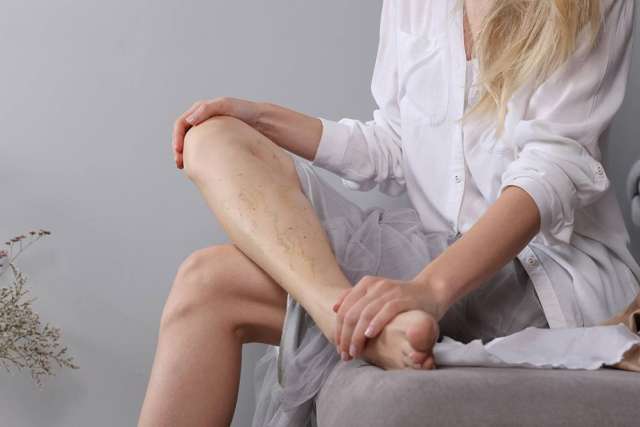Poor circulation is a real concern for people living with type 2 diabetes and can lead to an increased risk of amputation. Fortunately, there are steps you can take to keep your blood flow healthy: Making the right choices about how you exercise and what you do when you’re not exercising are the keys to healthy circulation.
The link between diabetes and poor circulation
Type 2 diabetes is a chronic condition that occurs when your body cannot properly process glucose (sugar). The result is blood glucose levels that are too high. Diabetes puts you at high risk for conditions that affect your circulatory system, including:
- High blood glucose levels cause fatty deposits to form inside blood vessels. Over time, these deposits make your blood vessels narrow and hard, lessening blood flow.
- Peripheral artery disease (PAD) produces fatty deposits that narrow blood vessels, mainly in your legs and feet. One-third of people with diabetes older than 50 have PAD.
Over time, poor blood flow can be detrimental for your hands, legs and feet. Complications associated with poor blood flow include:
- Pain while walking
- Decreased sensation in hands or feet
- Increased risk of developing infections or ulcers of the foot
- Slower healing time for wounds
- Nerve damage (neuropathy) that increases the likelihood of amputation
How to improve your circulation
Making small changes to your daily habits can greatly affect your circulatory system. Take the following steps to protect blood flow to your feet and hands:
Take quick, frequent exercise breaks
A recent study found the frequency of exercise for people with type 2 diabetes is more important than the duration. Exercising for just three minutes every 30 minutes showed more improvement in blood flow and blood vessel dilation than longer bouts of exercise (or no exercise at all). No matter when you exercise, aim for 30 minutes total, five days a week.
Exercise to benefit problem areas
Cardiovascular exercise will naturally promote blood flow. If you are having circulation problems, choose exercises that focus on that part of the body. If circulation is poor in your feet, walking gets blood moving in your toes, feet, ankles and legs. If you can’t get outside, target your lower body with squats, leg lifts and calf raises.
Eat for heart health
Adopting a , and the foods that go with it, keeps your blood flowing strong. A heart healthy diet should include:
- Omega-3 fatty acids (found in salmon and flax seeds) help lower blood pressure and improve circulation.
- Iron (found in red meats and spinach) helps create red blood vessels. Talk to your doctor about the right amount of iron for you. Too much iron is linked to cardiovascular disease.
- High-fiber foods (such as oatmeal and apples) reduce cholesterol and limit narrowing and hardening of your arteries.
Wear diabetic socks
Diabetic socks put pressure on calves and feet. For people with diabetes, the compression keeps veins straight, improving blood flow to the feet and keeping feet warm. The socks come in a range of materials and pressure. Work with your doctor to find the right combination.
Maintain low blood sugar
Managing your blood sugar levels helps reduce the build-up of fatty deposits in blood vessels. Talk to your doctor about the best way to maintain your target level and take insulin and other diabetes medications as directed.
Stop smoking
Smoking increases your risk for cardiovascular problems that may eventually restrict blood flow. The sooner you can stop smoking, the better it will be for your circulatory system.
Signs of poor circulation
Symptoms associated with a compromised circulatory system are not always easy to spot. But knowing the signs and addressing the issue promptly may help you avoid serious complications, including amputation. Signs of a serious circulation issue include:
- Brittle nails
- Cold hands and feet
- Dry or cracked skin, especially on the feet
- Hair loss on legs or feet
- Skin discoloration
- Slow-healing wounds
- Tingling or numbness in hands or feet
If you have type 2 diabetes and are experiencing symptoms of poor circulation, reach out to your primary care provider.



